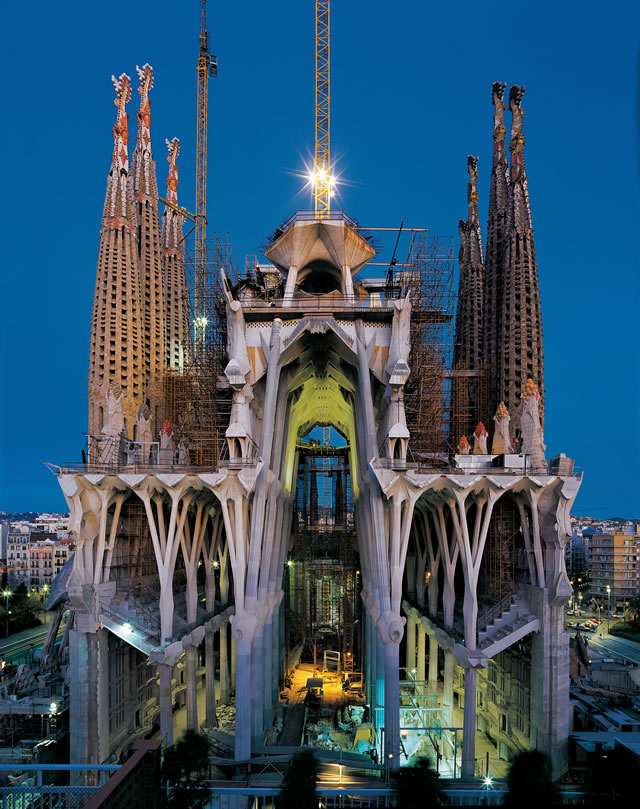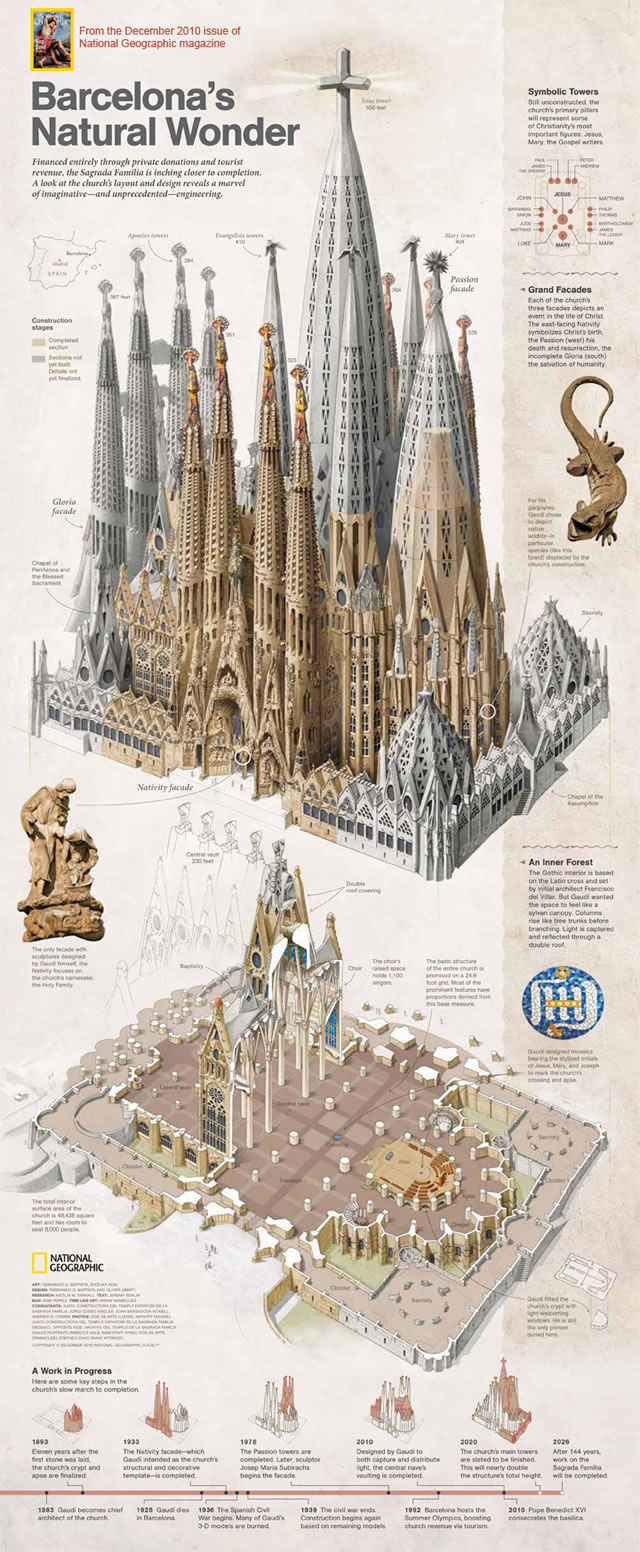Next stop in Spain is Valencia. It is an interesting city, located by the sea but not taking advantage of it. Old town was located inland and it does not flow to the sea shore, no direct connection, like in Barcelona, which will be the next post! Save the best for last… OK, back to Valencia. As someone who grew up in the warm water of Mediterranean Sea, I couldn’t help but go and check out the beach and surrounding. To my surprise, the buildings by the beach are neglected. Why not people are taking care of this area, where are the tapas bars that are everywhere but here? If you know the whys, please share with me.
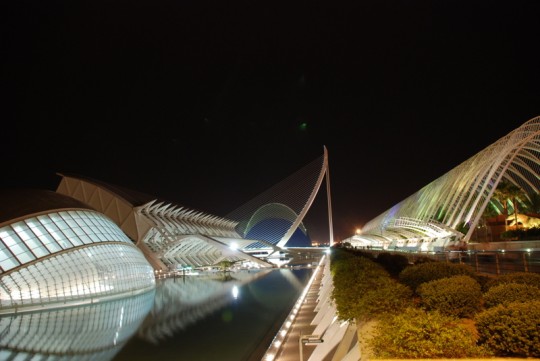
You cannot go to Valencia and not visit the most famous Valencian Spanish architect, sculptor and structural engineer Santiago Calatrava‘s Ciutat de les Arts i les Ciències (The City of Arts and Sciences). It is situated at the end of the old riverbed Turia and it is a serious of structures. No wonder it is called the “City”. I only had a chance to see the “City” at night which was breathtaking with the lights and shadows and reflections. I have an excuse to go back to Valencia because I would love to see it during the day to pay more attention to the structural details!
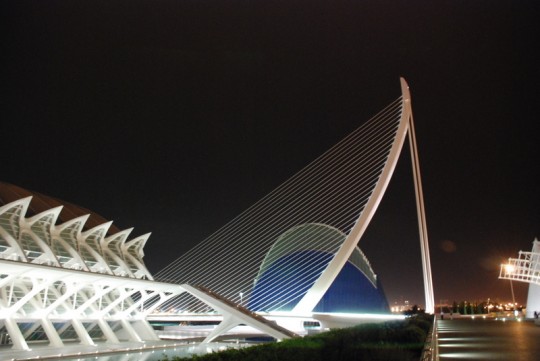
I like Calatrava’s buildings, but I love his bridges. Finally, I saw one with my own eyes and even had the honor of walking on one; El Puente de l’Assut de l’Or. Its 125 meters high pillar is the highest point in the city.
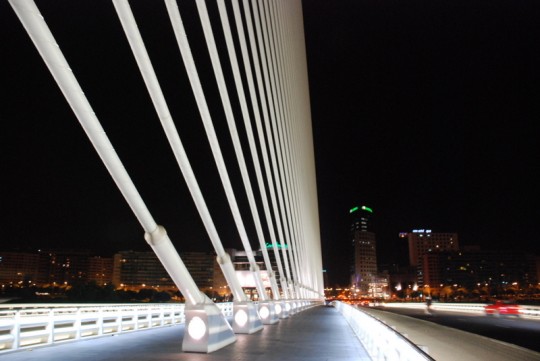
Calatrava solved the lighting issue by placing the lights at the base of the bridges parallel supports without disrupting the architectural design. We should all learn from this and plan with lighting in mind. Lighting should not be an add-on feature after the design is done, but a part of the design itself.
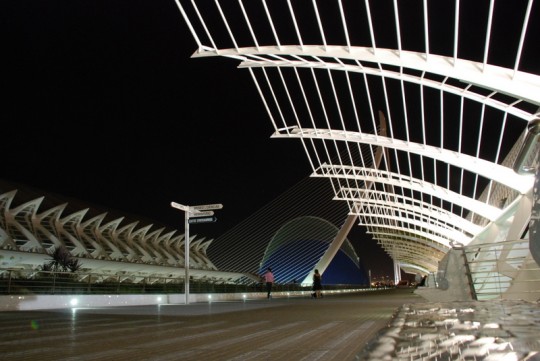
El Museu de les Ciències Príncipe Felipe (Príncipe Felipe Science Museum) is an interactive museum of science but resembling the skeleton of a whale. Seen on the left of the photo.
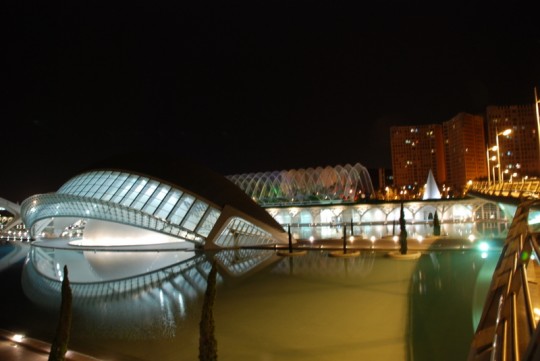
L’Hemisfèric is an Imax Cinema, Planetarium and Laserium. Built in the shape of the eye. The front part opens up which is a great feature for warm Valencia days and nights. Also, the reflection on the lake gives even a more “wow” effect.
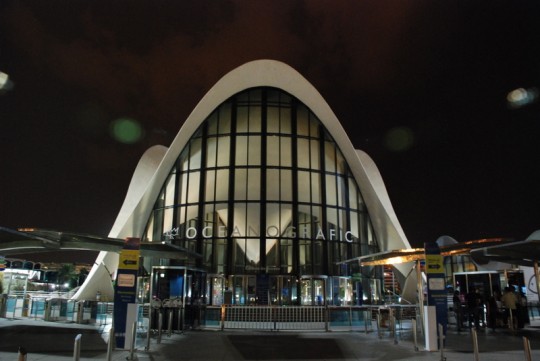
L’Oceanogràfic is an open-air oceanographic park. It is the largest oceanographic aquarium in Europe. It was built in the shape of a water lily and is the work of architect Félix Candela.
El Palau de les Arts Reina Sofía (Queen Sofia Palace of the Arts) is an opera house and performing arts center. Unfortunately they didn’t lit this building at night, so I didn’t see much of it. From here I am complaining to the authorities, please lit this beautiful building at night! We want to see it lit as shown in the postcards!
Did you know that Santiago Calatrava has his main office in Zürich, in addition to Paris and Valencia offices? I didn’t know that! Maybe one day, I will pass by and say “Hola”. I just have to make sure it is not during “siesta”.
And here we are in our last stop in the great city of Barcelona! Where the palm trees grow freely, the architecture grows freely, and both of these put me in a good mood. As I was walking around and inside of the very famous architectural buildings, I couldn’t help but think of how advanced the architecture is in Spain.
For example, Mies van der Rohe designed the Barcelona Pavilion (was the German Pavilion for the 1929 International Exposition in Barcelona, Spain) in 1929 which is quite modern for its time. It was, and still is, an important building in the history of modern architecture, known for its simple form and extravagant materials, such as marble and travertine. The simple floor plan is the best example of “less is more“.
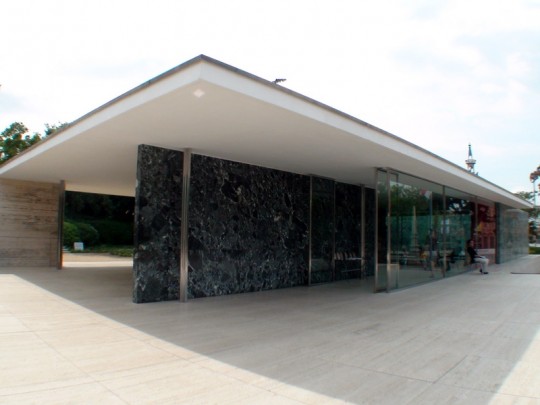
Mies van der Rohe wanted this building to become “an ideal zone of tranquility” for the visitors, and he just did that. After all the running around in the city, when I got to the Pavilion, I felt the calmness.
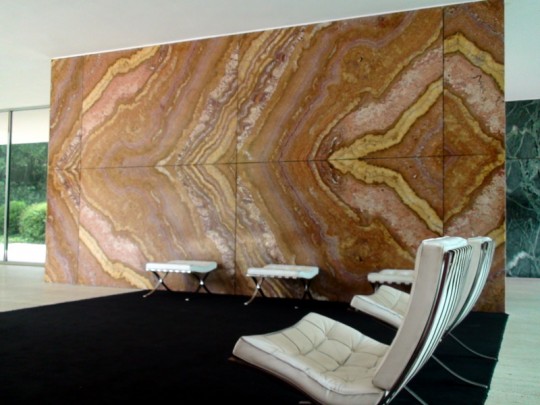
The famous Barcelona chair was exclusively designed for the German Pavilion, that country’s entry for the International Exposition of 1929, which was hosted by Barcelona, Spain.
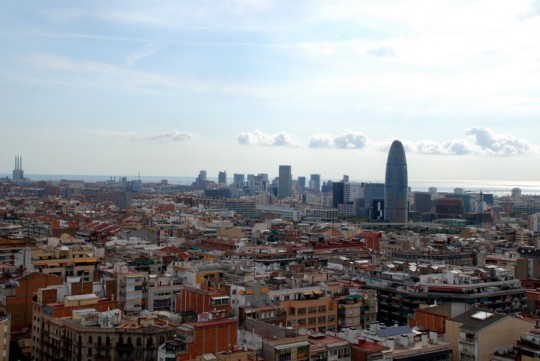
The Torre Agbar is a 38-storey tower, designed by French architect Jean Nouvel, which dominates the Barcelona skyline. The reinforced-concrete structure, crowned by a glass and steel dome, has a multi-colored facade of aluminum panels, behind glass louvers, in 25 different colors. Unfortunately, I didn’t get a chance to see the building at night. As a side note; it opened in June 2005 at a cost of 130 million euros.
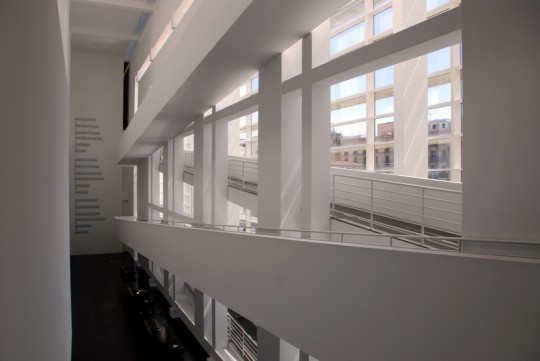
I like Richard Meier‘s pure design and the use of materials which creates very simple, clean, yet elegant spaces. Museu d’Art Contemporani de Barcelona – MACBA is no different. I had also seen the Getty Museum, designed by Meier, with his unique design language. Again, he played with the combination of shapes, the natural light, and of course, the shadows.
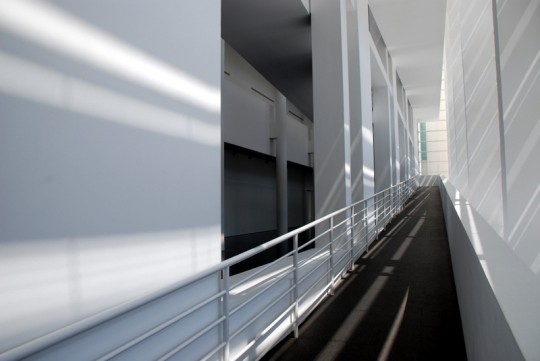
I was being lazy to write my final post on Spain which was about Gaudi. Then I got an e-mail from National Geographic magazine which is featuring a great article about Sagra da Familia on the December issue. The article on “Gaudi’s Masterpiece” by Jeremy Berlin can be found here.
I liked Jeremy’s take at the beginning of the article “”My client is not in a hurry,” Antoni Gaudí used to say. ” From your daily business life, do you know any client who is not in a hurry? It is very clear what we, architects, could create if there is no rush! Some critics might say, keep the tight deadlines which will eventually keep the architects in-line.
As National Geographic stated: “The graphic is the most complete and up-to-date model of how the building will appear when construction is complete and the first and only visualized union of the interior and exterior of the structure. It is a visual explanation of Gaudi’s unique style, divided into structural and ornamental features and will be on display in the basilica’s museum thereafter.”
Graphic by © National Geographic magazine – December 2010.
Photos by © Pere Vivas/Triangle Postals
You can also found photos from our trip by © Remzi Gokdag. Click to see more photos of Sagra da Familia.

